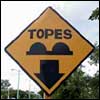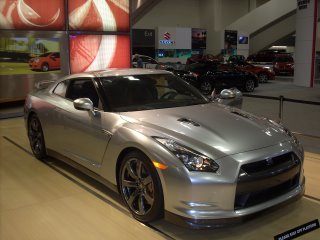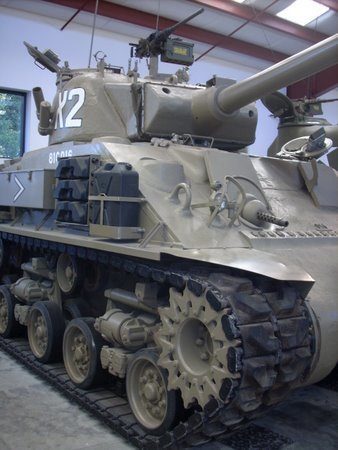The Challenges of Driving South of the Border

This past Thanksgiving I spent a week in the Mexican village of Ajijic, located on northwest shore Lake Chapala, about 45 minutes south of Guadalajara. We rented a car (an innocuous, oddly named, Dodge Attitude) at the airport, and while it wasn’t essential to have a car(Mexico has an extensive bus system) it did allow us to day-trip a much further than if we hadn’t had it.
Driving in Mexico presents more than a few challenges, especially for the tourist. Perhaps the greatest is being pretty much on full alert mode when you’re behind the wheel. This is sometimes difficult to do, as the countryside is beautiful, different, sometimes quaint and always interesting – in other words they’re are lots of distractions. But once you hit your first tope at speed, you’ll be soon finding yourself gawking less and more on the lookout for the “warning signs” of impeding front suspension failure. Topes are speed bumps, also referred to as reductors de velocidad on the infrequent occasions when there is an actual warning sign. Other indicators can be the flash of brake lights of the car in front of you as its hood, then trunk bob up and down wildly, or perhaps you’ll notice the cluster of roadside vendors on either side, hoping that you’ll look over their wares as you slow down.
Another challenge already alluded to is poor signage, most turn-offs are marked once, when it’s time to turn – there’s no quarter mile incremental build-up like in the US. It’s now, one chance only. And should you be on an autopista (multi-lane toll roads with alleged limited access) you’ll be hard pressed to find a “returno” to back-track.
Because of their expense, the autopistas are lightly traveled, and it’s the usually parallel carretera libre (old, free highways) that are crowded with trucks, pick-up trucks and coches (cars) all fearlessly passing each other, solid line be damned. While usually more scenic, they can slow and stressful.
Driving in the smaller towns is also fraught with hazards – if the streets are paved, it’s usually with cobblestones (so fun to stop on in the rain), they’re narrow, most intersections don’t have stop signs and there are few visible street signs (usually the sign is embedded in the wall of a building).
Traffic lights – think horizontal for starters, and a left turn? in Mexico you make it from the right lane, with the traffic signal. If a vehicle is using it’s left turn indicator it’s usually sign that the guy behind you is going to pass you or the guy in front of you thinks it’s alright for you to pass him (except if he’s actually turning left – always possibility).
You can read more about my adventures driving, hiking, eating and getting to know Mexico and its people on my blog Mexico Musings at Explore-Retire-Mexico.com.



